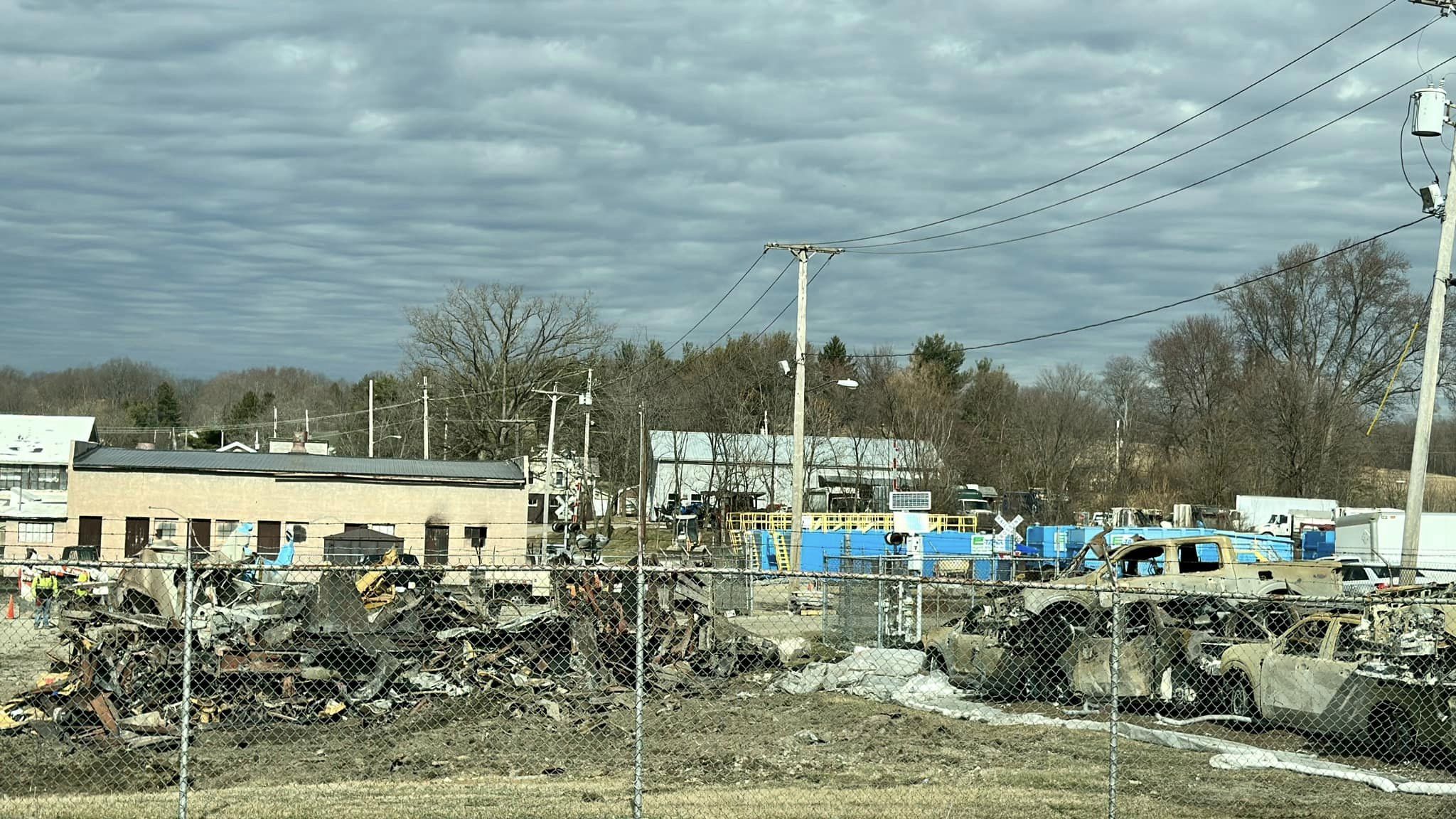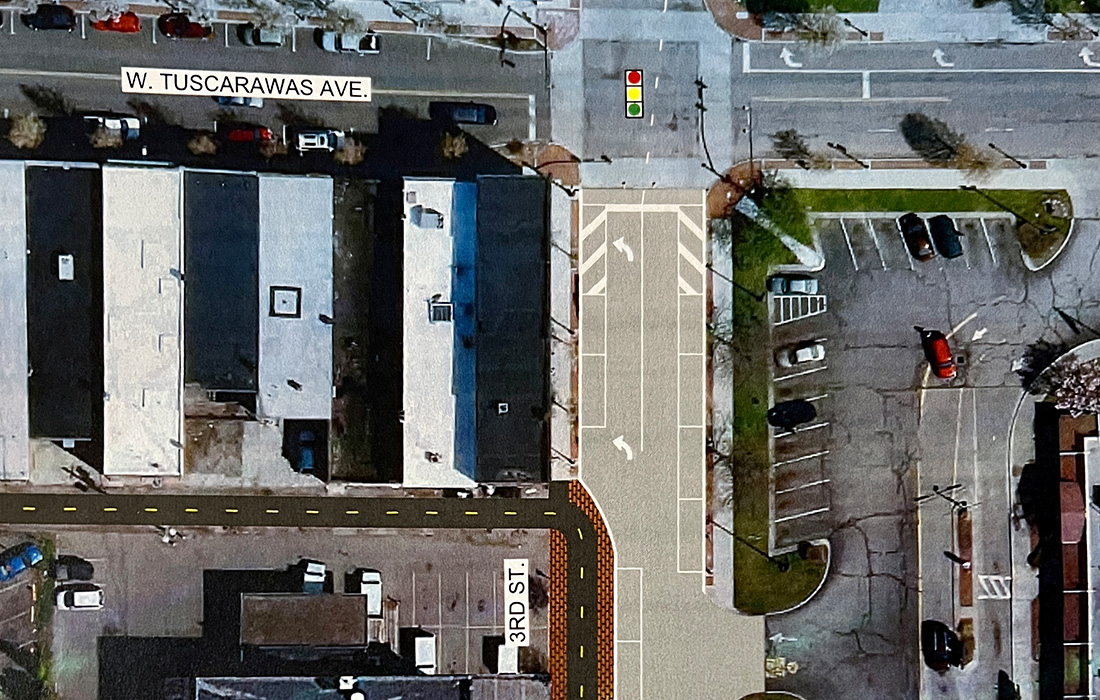Given the train accident in E. Palestine, Ohio, and the concerns from residents in the City of Barberton, I set out for reliable information. What happened in E. Palstine is a tragic accident and has disrupted the lives of a lot of people near and far. Aside from the derailment events, the threat and concern of containments on wildlife, and water quality have been on the minds of many.

I recently took a personal trip to E. Palestine to see firsthand the devastation of the accident. The trip was not to talk to government officials but to learn from the resident’s perspective. I talked to some residents as well as scientists and doctors that were in the area to understand a bit more about the risks to wildlife and residents. I also took note of the processes that were being used to clean up both debris and chemicals. While I am not remotely close to what one would call a professional in these types of disasters, it was eye-opening.
Barberton’s Water Supply
It is about every day that I am asked about Barberton’s water supply and the threats to our water supply relating to the train derailment. I reached out to Mr. Denny Weaver who oversees all our water treatment and is extremely knowledgeable in every aspect of our water and sewer for some insight. Below is a direct response from him. The Mayor has also mirrored this response when addressing the matter.
— Start of Response
Barberton’s water supply is from the Barberton Reservoir which is part of the Upper Wolf Creek watershed. All the water in our reservoir comes from areas north /northwest of our city. We are not in the zone of influence of contamination from the East Palestine area. I have attached a map of our watershed and there has been no evidence to suggest that the city’s water supply has been affected.
How often do we test internally?
We are regulated and permitted by Ohio EPA. Our permit specifies what and how often we analyze for compliance.
We collect samples within the plant every 4 hours and run regular quality parameters such as pH, turbidity, and chlorine residual. Daily we run Iron, manganese, chloride, fluoride, zinc, orthophosphate, hardness, alkalinity, and bacteria. We also collect samples daily from the distribution system and run the same tests on the distribution samples as the plant effluent samples. We test a minimum of 40 distribution samples monthly for bacteria and the samples are reported to the OEPA for compliance. We additionally test once a week for microcystin and cyanobacteria (also referred to as algal toxins).
What is our process of treating water from our reservoir until it is delivered to the water lines?
We are known as a conventional treatment water plant and we use the following processes to treat the water after it is piped to the plant. They occur in the order listed.
- OXIDATION – We add Potassium permanganate which is a strong oxidant used to oxidize iron and manganese as well as organics into forms that will precipitate (settle) out during the settling process. We then add Powdered Activated Carbon which helps improve taste and odor as well as adsorb additional contaminants. (Note –Powdered Activated Carbon is what is given to poisoning victims in emergency rooms)
- COAGULATION – We then add Ferric Chloride which is an iron-based coagulant used to change the electrical charge of the water. Electrical charges keep contaminants suspended in solution, changing the electrical charge enables the contaminants to clump together.
- FLOCCULATION – The clumped together particles are called floc, flocculation is a gentle stirring of the water to cause the floc to collide forming a bigger floc. This occurs in a large basin; the stirring also prevents the floc from settling out too soon to maximize time to gather contaminants.
- SETTLING – The flocculation basin flows into a settling basin. There is no stirring in this large basin. The water moves slowly through here and all the floc (contaminants) settle to the bottom of this basin. There are drains in the settling basin to remove the settled floc on a set schedule.
- FILTRATION – The settled water now is piped to rapid sand filters. We add Sodium Hypochlorite (bleach) to prevent bacterial growth in the filters, we also add caustic soda to adjust the water pH to help prevent corrosion in the distribution system. The filters contain a 12” layer of anthracite and a 12” layer of silica sand to filter the water. The filtered water collects together in a common pipe and flows to a large basin we call the clear well.
- DISINFECTION – Before entering the Clear Well we add additional Sodium Hypochlorite (bleach) to provide disinfection of the water. The amount added is determined to be enough to provide a continuous residual of .2 mg/l throughout the distribution system, which is required by law.
During the disinfection step, we also fluoridate the water using HFS (Hydrofluosalisic acid) and add a corrosion control chemical called Zinc Orthophosphate. Fluoridation and corrosion control chemicals are required by law.
We collect samples every four hours at the plant from the filters in use, both before and after. From the raw water entering the plant, and from the finished water leaving the plant. These samples are tested to ensure the treatment processes are operating properly.
We also have various sensors continuously monitoring processes throughout the plant.
Where does the water come from that flows into our reservoir?
I have attached a map of the Wolf Creek Watershed. Our watershed is pretty well isolated with the continental divide to the north and drains an area with very little industry. We also on occasion use our three wells to supplement the reservoir during dry seasons. All the streams within our watershed originate within this area and are the result of runoff or springs originating in this area. The only manner in which the East Palestine incident could affect our water supply is from the off-gassing and smoke expelled into the atmosphere. We were not located downwind of the incident so no impact can reasonably be expected.
Do we have the capability to test for all contaminants?
No, we test for contaminants that are required by OEPA. They determine what will be tested based on the potential for it to be present. Testing is performed once a year for a large number of contaminants and samples are sent to laboratories with personnel certified to perform the required tests. More testing would be required if trace amounts are found during the annual testing.
Denny Weaver – Ultilies Director for the City of Barberton
— End of Response
Attached to the email, were images of the watershed and continental dived mentioned in the response.


The City of Barberton encourages any person concerned and or that has questions to call the Mayor’s office at (330) 753-6611.
What about videos on social media with paint peeling and sheening in water?
Since the situation is extremely important to safety, I myself took the time to watch every video or post about what looked to be damaging or harmful results of the train derailment chemicals being introduced into the water supply nearby as well as acid rain.
While I am unable to find any evidence that any of the videos are credible, I can with confidence say that at least 1 of the videos of clear coat peeling off a Ford Ranger is misleading. Ford Rangers and older cars have a common issue where the clear coat fails (VERY COMMON). I believe the video is taking advantage of the disaster for views and attention while stirring the pot.
If you ever have concerns about safety, contact the local authorities directly for verified information.
Should we be concerned?
Absolutely! Not only should we be diligent and continue to monitor our water supply, we too should look at our disaster plans. Lord forbid an accident happens here in town, but we should always be looking to prepare, prevent, and protect.



